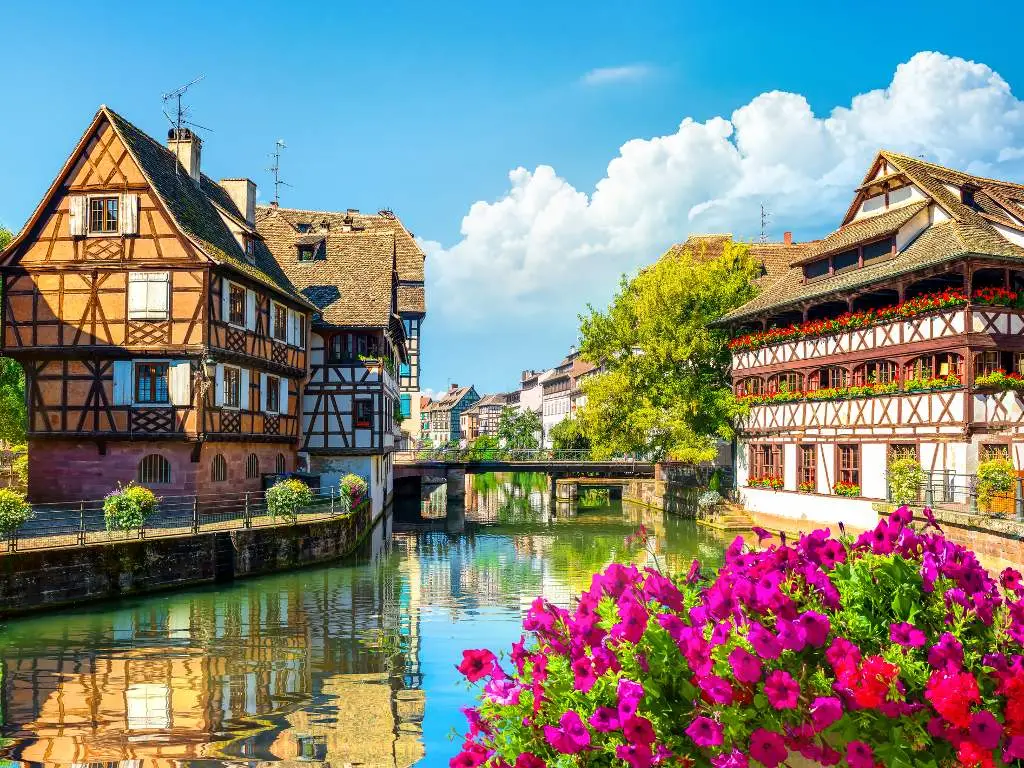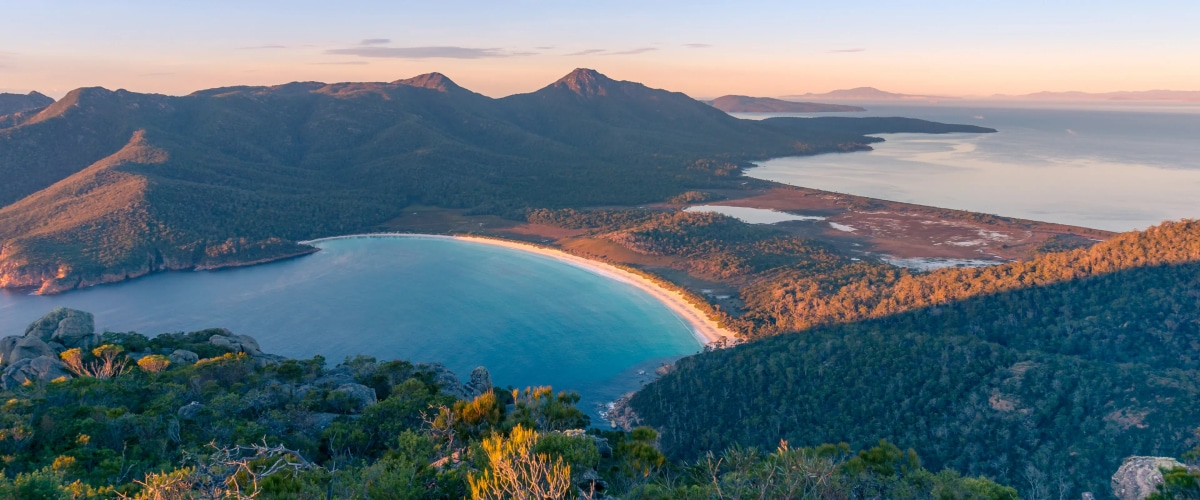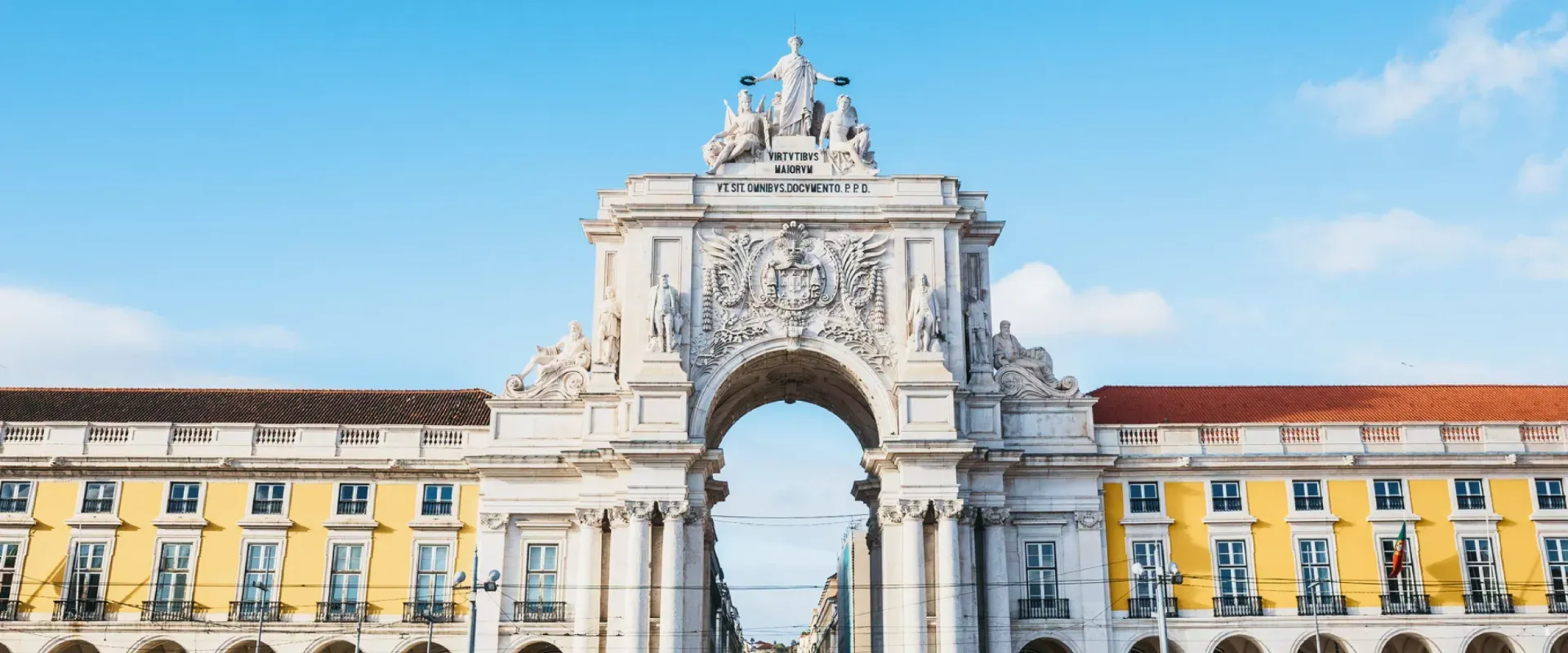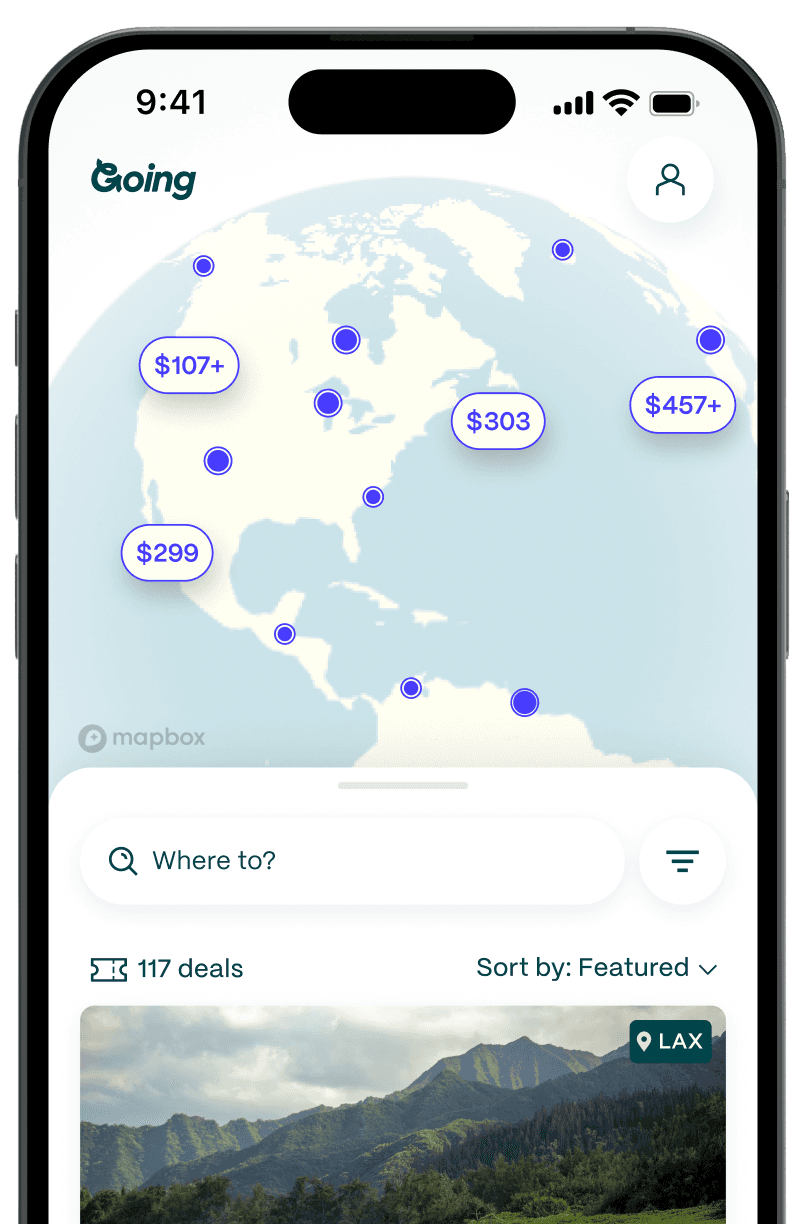
Berlin: The Formerly Divided German City Where History Is All Around
“The greatest cultural extravaganza that one could imagine”

That’s how one-time Berlin resident David Bowie described Germany’s capital, the formerly divided city that’s now a hotbed of creativity and experimentation. While the city’s often-tragic history is never far from sight, neither is evidence of Berlin’s ability to reinvent itself again and again. It’s a city where the only constant is change—you never know what you’ll find each time you visit Berlin.
A city divided
The infamous Berlin Wall was built in 1961 to prevent East Berliners from the German Democratic Republic (GDR) from escaping to West Berlin in West Germany.
Many people mistakenly assume that the wall was built around East Berlin. However, the approximately 100-mile Berlin Wall encircled West Berlin, effectively making it a West German island in the middle of East Germany.
The Berlin Wall divided the city in two and stood for 28 years until it fell on November 9, 1989, almost by accident. Although the wall physically no longer exists as a barrier between the two parts of the city, you can walk or cycle its course along the Berliner Mauerweg (“Berlin Wall Path”). The path is lined with memorials commemorating those who died trying to escape.

On some segments, a line the width of two bricks indicates where the wall stood, making it easy to imagine how the space—maybe now a busy intersection or café sidewalk—was cut through by a towering concrete wall dividing the city and its people.
You can also see this division from space, due to the use of different types of street lights in East Berlin and West Berlin.
Off the canvas, into the streets

Berlin’s street art scene began in the 70s in West Berlin where the massive concrete walls of the Berlin Wall served as a vast, empty space for people (often the marginalized and immigrants) to express their social and political views or affiliations.
Of course, it was forbidden to have any such artistic and political expression on the East Berlin side of the wall. So when the Berlin Wall fell, artists from both sides of the city could finally express themselves. Street art spread throughout the city, helping to turn the gray, monotone buildings in the former East Berlin neighborhoods of Mitte, Friedrichshain, and Prenzlauer Berg into vibrant art scenes. To this day, the city’s many abandoned buildings, bridges, and factories provide an ideal canvas for street artists to express themselves.
Although illegal street art and graffiti are widespread, sponsors around the city increasingly tap professional artists for commissioned work and street murals. For example, the street art museum URBAN NATION sponsors artists to bring their art to different neighborhoods with its ONE WALL project.
Berlin’s classic street art collection remains the East Side Gallery, a concrete canvas for various artists from all over the world stretching over 0.8 miles (1.3 kms) of what was the Berlin Wall. You can also find Berlin street art collections on Instagram at Street Art Berlin or by following specific artists like Tobo or 1up Crew.
More bridges than Venice
Berlin is one of Europe’s great water cities, with more than 100 miles of navigable waterways and 1,000 bridges (to Venice’s 400) within the city limits. This not only includes the city’s two main rivers, the Spree and Havel, but also the vast network of canals running throughout the city and the clusters of lakes scattered about its edges.
The canals were built starting in the 19th century to more efficiently deliver materials and food throughout the city as it rapidly industrialized. Today, canal banks and pedestrian bridges draw locals and visitors to hang out and relax with picnics or impromptu concerts.
For the more adventurous, it’s possible to kayak or canoe the canals or take a boat to reach one of the city’s big rivers or lakes. Some of the boat trips are even part of Berlin’s public transport system, so you can cross a lake for the price of a regular bus or metro ticket.
Home of the döner kebap

Kebaps (also called kebabs) are Turkish in origin, but the now-famous döner kebap—slices of meat carved from a spindle, topped with salad and sauce (usually garlic, herb or hot sauce, or a combination of all three) and tucked into a bread pocket—was invented in Berlin.
After World War II, thousands of Turkish workers came to Berlin under the Guest Worker Program (the city is now home to the largest Turkish population outside Turkey). One of them, Kadir Nurman, noticed that Berliners led fast-paced lives and could use a meal option they could carry with them. In 1972, he set up a food stand in West Berlin featuring the Turkish staple of meat carved from a spindle, but with the innovation of it being stuffed into a takeaway bread pocket. And so that was how Berlin’s most beloved street food was born.
You can fashion a tasty approximation of the spiced meat, flatbread, and popular sauces using this recipe.
30 villages, one city
A common question Berlin’s residents ask of one another: “Which kiez do you live in?”
A Berliner’s kiez (neighborhood) becomes a defining characteristic and a source of any combination of identity, pride, and self-deprecation depending on the day and one’s sense of humor. Berliners feel this strong neighborhood identity perhaps because the city has formed over time through the incorporation of districts that were once individual small towns or villages until the early 20th century.
Each neighborhood is distinct, with a unique aesthetic and architecture. Many even still have their own municipal town hall and town center dating back to when they were independent entities.
Where history is all around—even beneath your feet

Berlin’s World War II and Holocaust history can feel overwhelming; it’s difficult to fully grasp the scale of destruction and loss of human life. But the city doesn’t shy away from its past. It’s full of subtle yet impactful memorials and markers, often in places you least suspect.
For example, Platform 17 at Grunewald Station was once the location from which trains departed to concentration camps in Germany, Poland, and Czechia during World War II. Today, the tracks are still there, but are no longer in use. Memorial markers line both sides of the tracks and list each train that departed from there for the concentration camps, along with the number of Jewish people each one carried. No photos or lengthy historical descriptions are required to appreciate the depth of the message.
The Stolpersteine (Stumbling Blocks) project aims to bring the history down to earth by sharing the names and stories of individuals. These small, brass cubes can be found embedded in sidewalks outside apartment buildings throughout the city, memorializing people who once lived in that building and were victims of the Nazis in World War II.
Details include the name, date of birth, date of arrest, the concentration camp(s) the person was sent to, the fate (survived, escaped, died), and date of death (if applicable). Only one name per block is allowed. If several victims once lived in a building, you might find a cluster of blocks outside its front door.
These blocks are raised only slightly from the sidewalk. The idea is not for you to trip on them, but to “stumble” upon them with your feet, your head, and your heart.
Memory culture—deliberate, subtle, and reflective use of memorials to remind everyone of the country’s past so that it may better guide its present and future—continues to be important to Germany and its people.
A city built for cycling
Berlin is a city meant to be explored on two wheels. The city’s topography is almost completely flat, so there are no grueling hills. It’s spread out, too, so cycling helps you reach more of the city than walking, yet puts you in touch with more than motorized transport might.
The city’s bicycle lanes take you seamlessly from one neighborhood to the next and even further afield to villages on the city’s edge. The city is so bike-friendly because cycling is one of the major forms of transport for locals (only around one in three Berliners own a car).
Bikes are given the right of way over cars, and in the last four years, the city government has increased its investment in bicycle infrastructure and safety six-fold, including building more bike lanes, adding to the already existing 390 miles of bicycle paths.
New purpose for old buildings

Berlin is creative in how it repurposes and gives old buildings and spaces new life as parks, museums, and other cultural venues.
Hamburger Bahnhof, once a busy railway station, now serves as a modern art museum. A former air-raid bunker from World War II has been repurposed to house the Boros Collection of contemporary art. And a former East German power plant has been transformed into Berlin’s most iconic club, Berghain.
Then there’s Tempelhof, the site of what was West Berlin’s main airport. When the airport ceased operations in 2008, the city gave the space a new life as Berlin’s largest park (at 953 acres, it measures 113 acres larger than New York’s Central Park), complete with all its runways intact. Tempelhof Field, as it is now called, brings people of all ages and backgrounds together to cycle, run, skateboard, slackline, and picnic.
Berlin on film
Although memories of a divided Berlin may slowly be fading, there are a few movies that provide a glimpse into ordinary life on both sides of the wall.
One West Berlin film staple, released in 1987, is Wings of Desire. Although the divided city isn’t the focus of this fantasy-romance, the desolate “No Man’s Land” areas immediately on either side of the wall form much of the film’s backdrop.
As for East Berlin, The Secret Lives of Others provides a somber look at the role that the Stasi (East German secret police) played in the monitoring and control of its citizens. Sonnenallee, named after one of the border crossings, offers a lighter, yet no less real, glimpse into what it was like to grow up as a teenager in East Berlin in the 1980s.
Lightest of all, Goodbye, Lenin centers on an enthusiastically communist mother in East Berlin who goes into a coma just before the Wall falls and comes to shortly after. The doctor informs her son that she can’t endure any more shocks. The son’s efforts range from heartwarming to absurd as he attempts to shield his mother from the rampant changes arriving daily in what was once her East German “good” life.
Very green…and sometimes naked

An astonishing 44% of Berlin is parks, forests, waterways, and green spaces and a remarkable amount of wildlife—like foxes, wild boars, and birds—call the city home.
Any time the sun comes out, locals flock to the parks for picnics, lakes for swimming, and forests for walking or cycling. And many of them like to sunbathe naked. This naturalist culture, Freikörperkultur (aka, FKK) became especially popular among people in former East Germany as a deliberate display of free expression while living under a communist regime.
Though some practices fade with memory, this one remains popular today, as you can see from this naked sunbather who went running after a wild boar that stole his laptop bag.
Good to Know
Is Berlin expensive?
Berlin is a large and varied city with options for travelers who want to splurge and those on a tighter budget. It’s not as inexpensive as some German cities, and it tends to be cheaper to visit than other major European capitals. Depending on the season and neighborhood, you can sometimes find nice rooms in 3-star hotels starting around $100 per night. Dining options run the expense gamut, with multi-course meals for two ranging from $50-150 and a tasty meal in a beer garden or a takeaway döner kebap costing less than $10 per person.
Best time to visit Berlin
The best months to visit Berlin are April-October, from late spring to early fall. Summers can be warm and somewhat humid, but it doesn’t tend to get as hot in summer in Berlin as it does further south in Europe. Temperatures in April and September may only top out in the mid-50sF and the weather changes quickly, so it’s good to pack layers. The three rainiest months in the city are June-August, though, so keep rain gear handy.
What languages are spoken in Berlin?
German is the official language throughout Germany, but English is widely spoken and understood in Berlin.
Berlin with kids
Berlin is a very family-friendly city, with attractions and activities the whole family can enjoy. There are dozens of parks, gardens, and playgrounds where kids can run around, including Templehof Park where you can walk or cycle down an old airport runway, Treptower Park with the option of renting canoes or paddle boats on the Spree River or Pfaueninsel palace and its surrounding park where peacocks roam freely. There are more animals to see at Berlin’s zoo and the Tierpark. The history of a place like Berlin might be harder for your kids to understand, but exhibits like those at the interactive DDR Museum can help put history into context for kids and adults alike.
Berlin public transportation
Berlin’s public transportation system is excellent, with an efficient network of underground (U-Bahn) and elevated (S-Bahn) trains, as well as trams and buses, that can take you almost anywhere you’ll need to go in the city—including the airport. They’re affordable and easy to use, and they run 24 hours a day on weekends.
Is Berlin safe?
Germany ranks #16 in the world on the Global Peace Index and #8 in the world on the LGBTQ+ Equality Index. Berlin is a big city so visitors should take regular precautions against pickpockets at restaurants, cafes or public transport, but it is generally a very safe city to visit and explore.
Getting to Berlin
- Main airport: BER
- Average Going price for cheap flights to Berlin: $536 roundtrip
>> Check out our layover guide to Frankfurt or get inspired with 25 suggested Europe itineraries.
Going members get amazingly cheap flights delivered right to their inboxes.
Read about more destinations in Europe:
Last updated August 29, 2024









